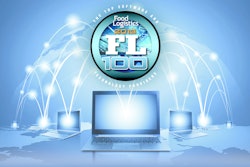It looks like the USDA is starting to come out in defense of it's controversial HACCP-based Inspection Model Program, otherwise known as HIMP. In this article from Food Safety News, it appears the acting Under Secretary of Food Safety at the U.S. Department of Agriculture Brian Ronholm gave an interview to meat industry trade publication Meatingplace defending the HIMP rule changes, stating that it's aim is to rearrange inspectors for a more scientific approach.
Implementing HIMP would mean that chicken evisceration line speeds would increase from 140 birds per minute to 175, and some USDA inspectors would be moved off the inspection line to perform other duties involved in safety verification, according to USDA officials.
In the interview, Ronholm said that the goal of HIMP is to rearrange inspectors to focus on tasks that improve food safety from a scientific perspective. Because microbial contaminants such as Salmonella and Campylobacter are invisible to the naked eye, it makes more sense to take some inspectors off the line and have them focus on verifying that slaughter plants’ food safety systems are in working order, Ronholm said.
That said, inspectors working under HIMP would be looking for fecal contamination earlier in the production chain than they currently are. In non-HIMP plants, Ronholm said, inspectors only stop the line for fecal contamination at the chilling stage.
USDA officials say that fecal material appears in HIMP plants about half as often as today’s standard plant. Ronholm added that HIMP inspectors catch “infectious conditions” on four out of every 100 million carcasses, and visible fecal contamination on nine out of every 100 million carcasses. Under HIMP, each evisceration line will still be required to have one inspector available to catch signs of food safety defects such as septicemia, toxemia or fecal material.
The White House has indicated that April 2014 is the target for issuing a final rule on HIMP. To read more, click HERE.

















